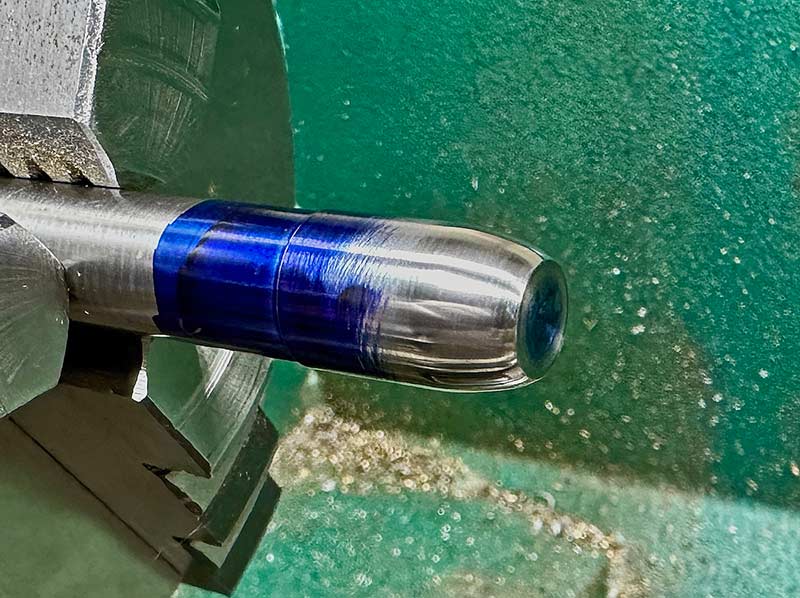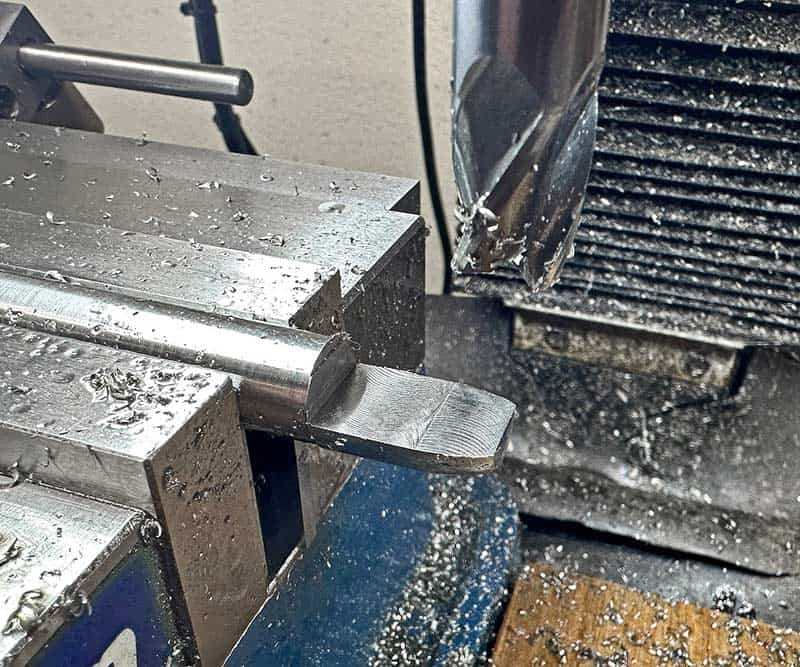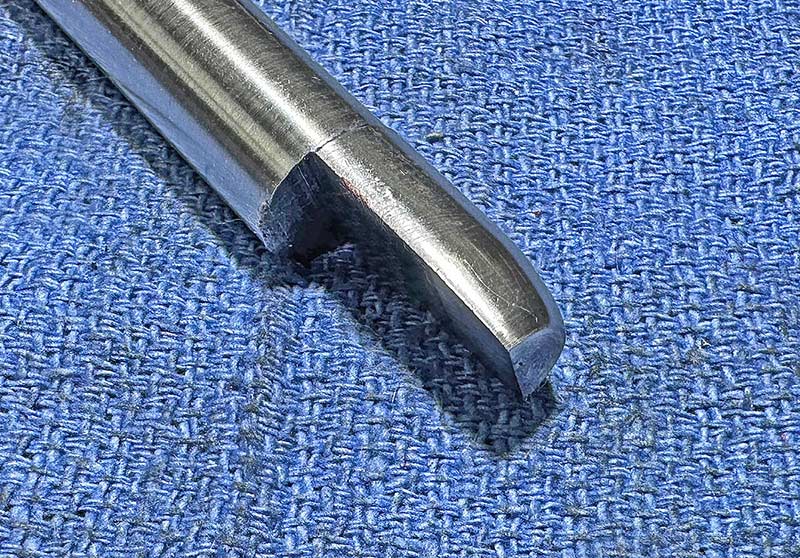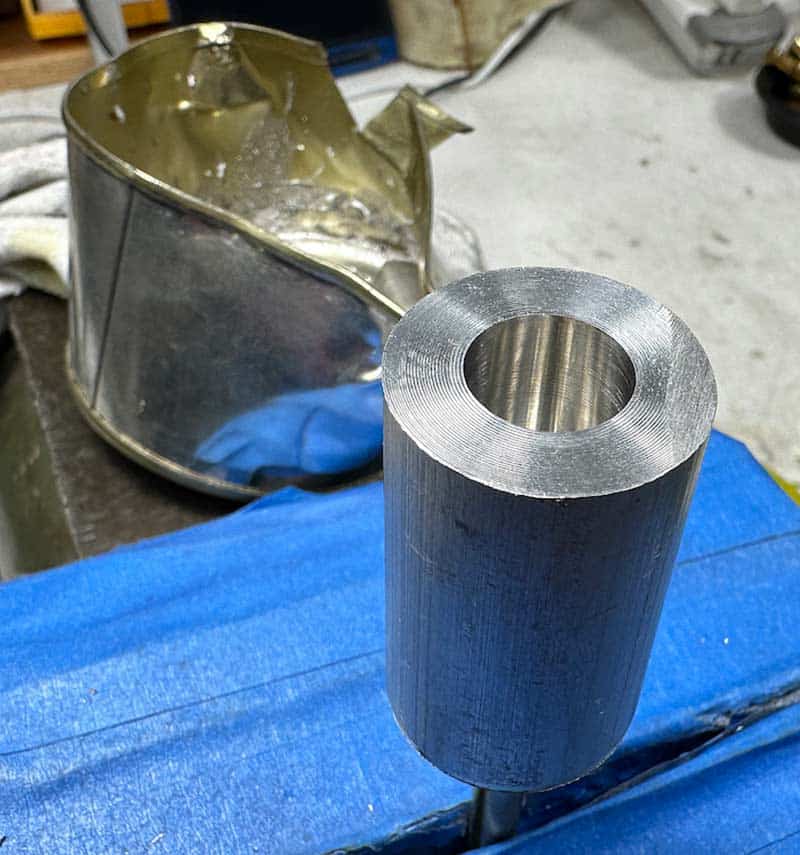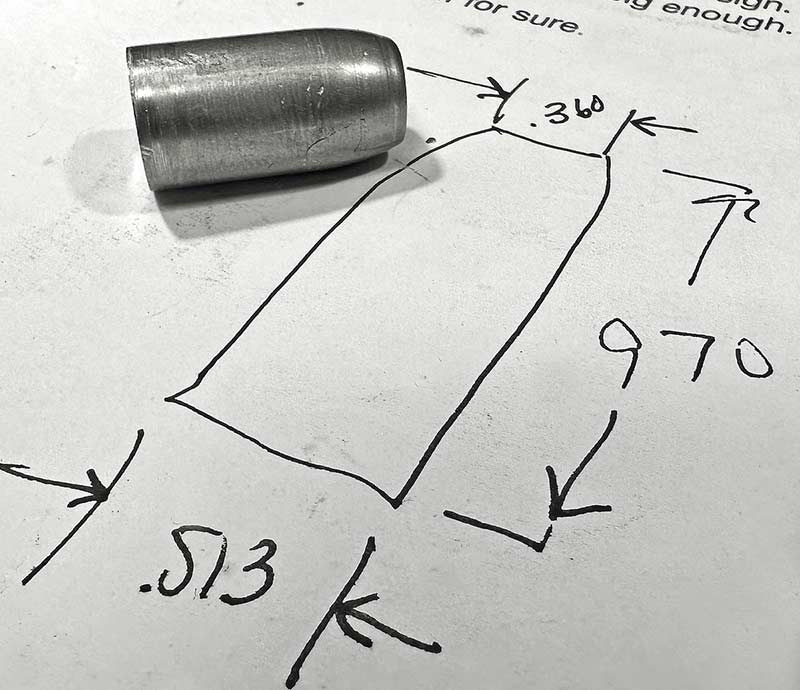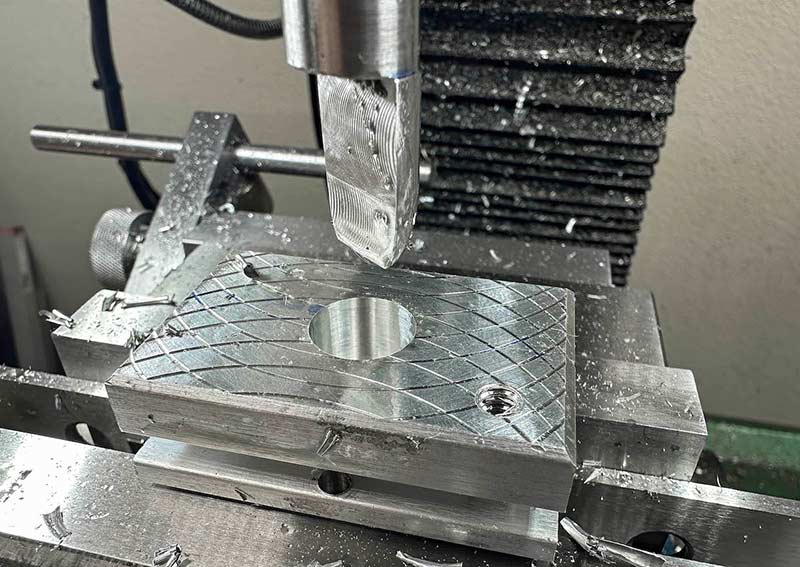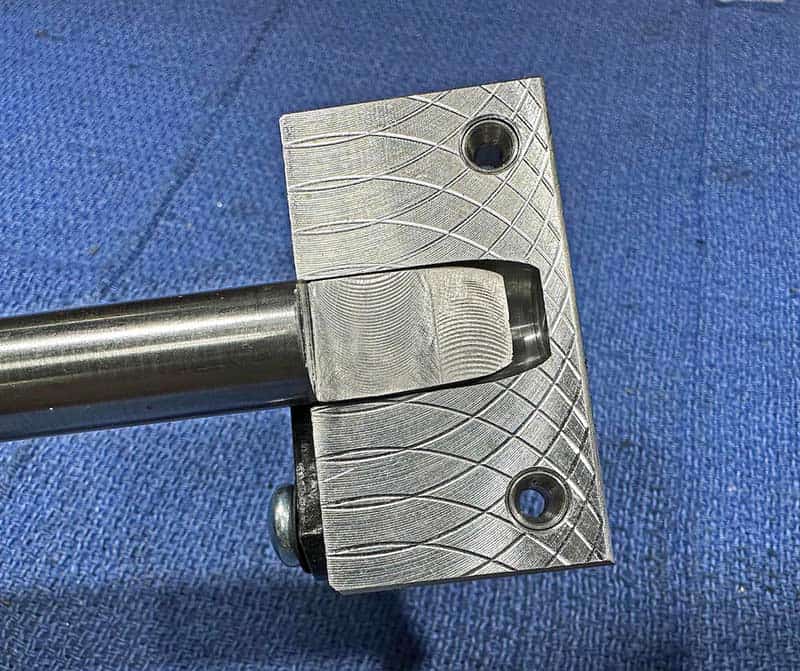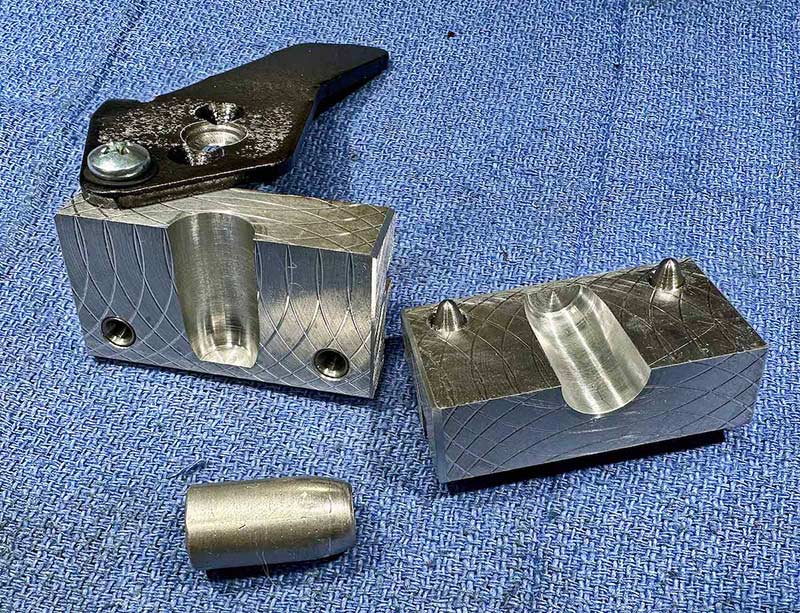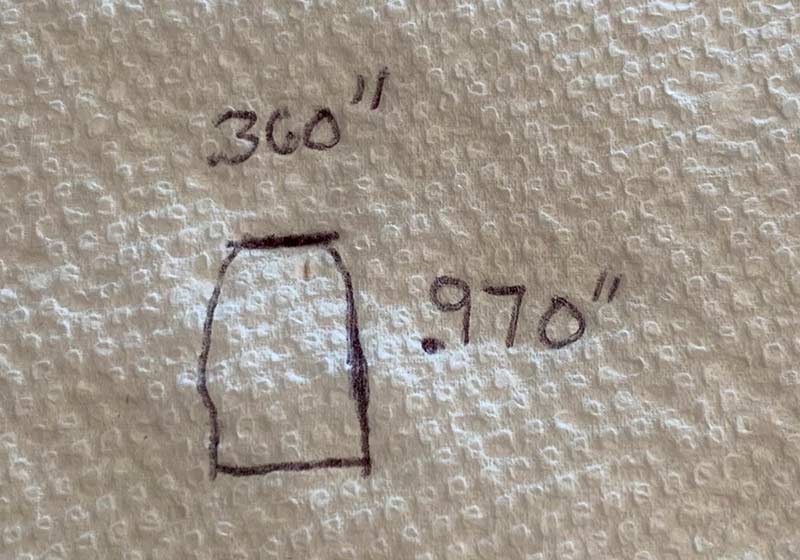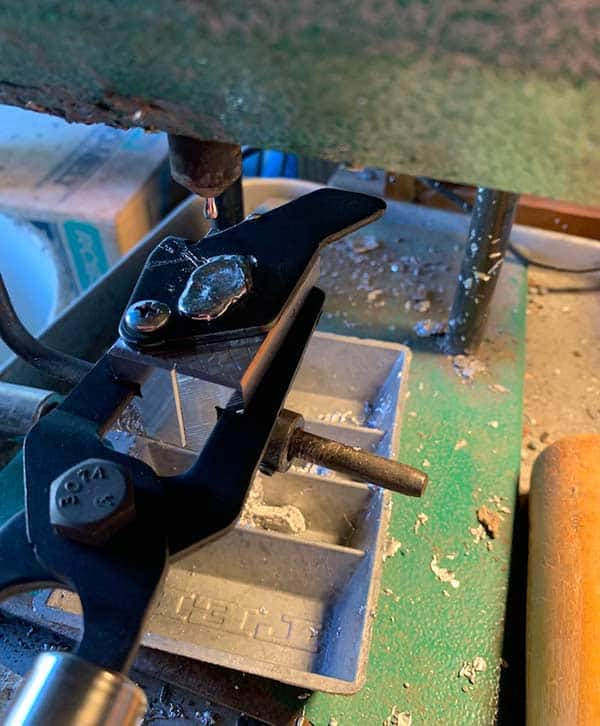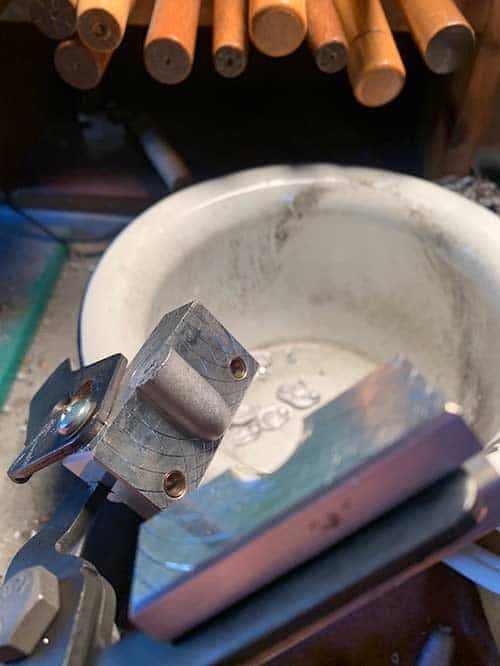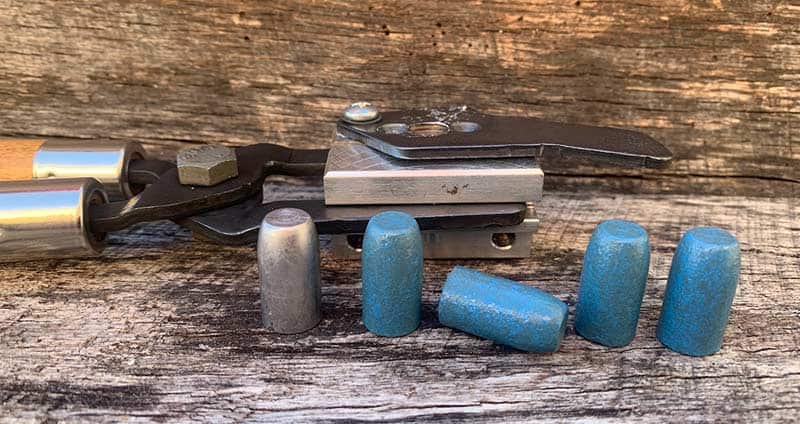Breaking The Mold By
Making Your Mold
It all started with a YouTube video. While searching for something, I ended up down the rabbit hole. You know how that goes. But I stumbled onto a video about making a cast bullet mold. Hmm … It didn’t look too complicated — especially since I had someone else in mind to do the work! And it was actually quite interesting. So, I forwarded it to our own special editor, Roy Huntington. Roy responded, “I think can do that, Tank.” And a plan was hatched.
A few months later, Roy asked for the bullet’s dimensions. Since I was going to be powder coating the lead slug, lube grooves wouldn’t be necessary, making it a nice beginner project. I made a rough sketch on the clean part of my napkin and sent the sketch to Roy. He did the rest.
I was looking for a slug weighing around 400 grains for my BFR .500 Linebaugh. I was off by about 120 grains. So much for my calculations! But the 520-grain slug would now serve two purposes: Its original purpose was for my BFR .500 Linebaugh, and I now also had a proper slug for my CZ 550 .500 Jeffery rifle. Sometimes, so-called mistakes are actually blessings in disguise.
Roy did a great job taking pictures, along with telling us what he did to make the cutter for the mold blocks. Stephanie at Lee Precision was kind enough to send us some #90801 blank double mold blocks.
At this point, I have cast a few dozen bullets, powder coated and sized to .512” with a Lee Automatic Processing Press (APP). I will load them for my .500 Linebaugh and .500 Jeffery rifles and write a follow-up article with the load data and results.

